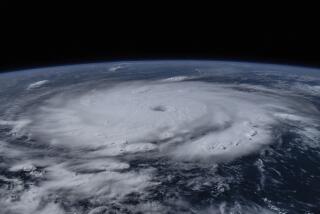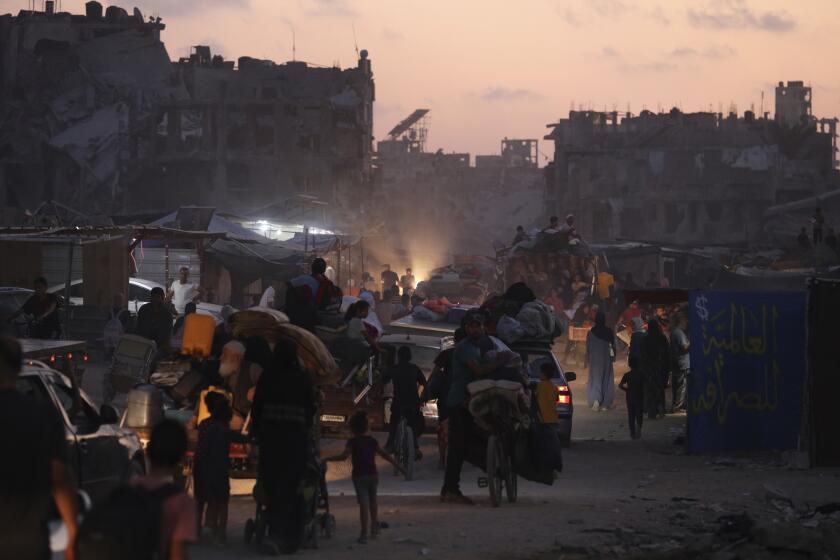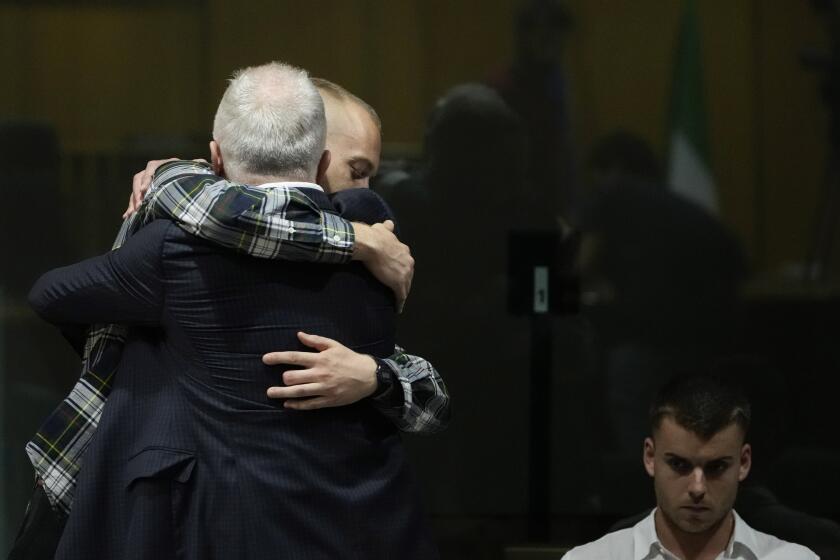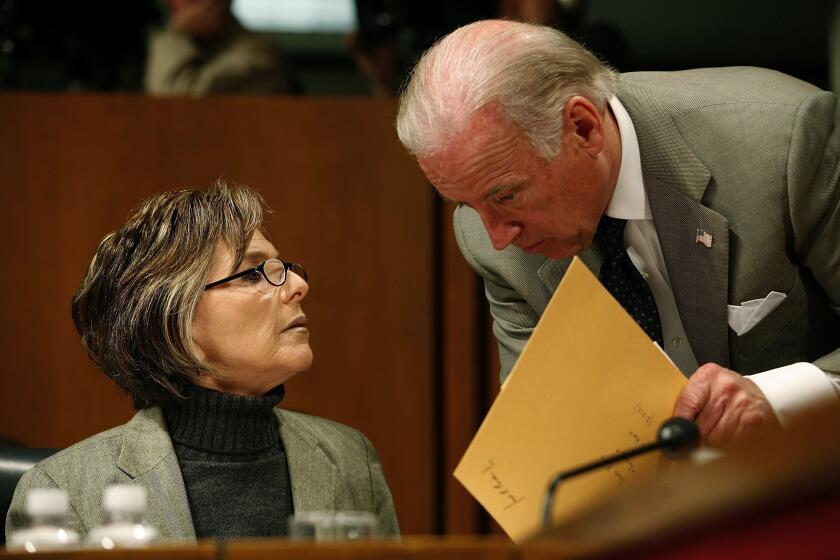In Indiana, protesters keep giving peace a chance
It was almost 5 p.m. when the well-worn white Oldsmobile sedan arrived at Courthouse Square, bearing bumper stickers that declared its occupant to be “Fully Human” and a “Peacemonger.”
The driver and a passenger climbed out and, with barely a word, began pulling stacks of placards and banners and pamphlets from the trunk and back seat.
It took several trips to carry the load to the appointed corner, beneath a tall Civil War statue, but they made fast work of it, an efficiency earned by experience. Timothy Baer and Christine Glaser, coordinators of the Bloomington Peace Action Coalition, have performed this drill many, many times before.
For seven years now, the war protest has been a weekly staple in downtown Bloomington. Every Wednesday at 5 p.m., they haul out the signs and demonstrate for an hour at the corner of Kirkwood and Walnut, trying to catch the attention of homebound commuters.
On the initial night of the Iraq invasion, Baer recalled with a smile, they filled the entire square with 900 demonstrators. At other pivotal times, the attendance has averaged 200 or more. Lately, though, the turnout has dropped.
“Our group has gotten smaller and smaller,” conceded the 46-year-old former engineer, who in a late career switch now provides nursing care for the disabled. “This winter it has really gone down.”
The campaign to elect Barack Obama diverted energy, Baer said. Bloomington, a college town, helped swing Indiana into the blue-state column, which political analysts saw as one of Obama’s more surprising triumphs. His victory sapped the antiwar movement even more.
“I think,” Baer said, “that a lot of people are kind of like, ‘It’s all kind of moving now. It’s all going to change.’ And I don’t quite feel that way.”
“It’s not just a feeling,” added Glaser, a 52-year-old environmental consultant and professor. Obama “is not talking about a complete withdrawal. He is talking about a drawdown. And that is really not different from things we have heard in the past, and it is not what we want.”
On this night, the protest crowd peaked at 25. They arrived in twos and threes, grabbed a sign and found a spot on the corner to hold it aloft. It was a mix of old and young, and they seemed to know one another well, chatting in the ranks about future events and geopolitics and the weather.
Midway through the hour it began to snow, and gusts from the west made the night seem much colder than the 28 degrees flashing on the rooftop thermometer of a nearby bank. Baer and Glaser had to fight the wind from blowing over the demonstration centerpiece, a big banner they held that proclaimed, “Stop Killing the Children of Iraq.”
On other nights the protest has attracted active soldiers or their families, who engage the demonstrators in debate. This week it didn’t happen, perhaps because the cold drove away most pedestrians. There were honks in support from passing motorists, one flashed peace sign, one thumbs-up, an angry engine revving and an extended middle finger.
A young man in his Jeep paused in the road to chant, “USA, USA, USA, USA.” Another rolled down his window to wave a Palestinian headband, for some of the protesters had brought signs that made reference to the current violence in the Gaza Strip.
“Thank you, guys, thank you,” this man cried out again and again.
And that was about it.
After the hour passed, Baer and Glaser began to repack the car with the same efficiency as before. And again, in twos and threes, the protesters drifted into the frigid Hoosier night -- another Wednesday-night war protest come and gone.
Had they made any difference?
“Well, it’s a good question,” said James Cooper, a bearded 39-year-old “on-again, off-again” student at Indiana University, lingering a little while longer with a few others to show support for Palestinians. “We don’t have an answer for that.
“The purpose,” he said after a pause, “is to keep this war on terror that we don’t believe in on the radar screen. And this is just a good place to stand, to give people driving home a reminder for a few seconds of an evening once a week. That’s all.”
By this point, the commuter traffic had all but died for the night, and the reading on bank thermometer had dropped to 26 degrees.
--
--
latimes.com/americanmoment
Road to the inauguration
Follow Peter H. King and photographer Kirk McKoy in this series of articles as they wend their way to Washington for the Jan. 20 inauguration of Barack Obama, sending back reports from across the land in this time of transition.
More to Read
Start your day right
Sign up for Essential California for news, features and recommendations from the L.A. Times and beyond in your inbox six days a week.
You may occasionally receive promotional content from the Los Angeles Times.







